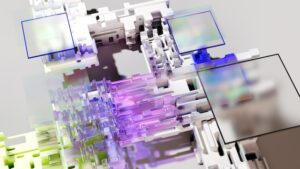
Artificial intelligence (AI) robots are becoming an increasingly common presence in our daily lives.
[tta_listen_btn]
Artificial intelligence (AI) robots are becoming an increasingly common presence in our daily lives, from home assistants like Amazon’s Alexa to industrial robots in factories. With their advanced capabilities and increasing sophistication, AI robots have the potential to revolutionize many industries and change the way we work and live.
One area where AI robots are already having a significant impact is in manufacturing. According to a report by the International Federation of Robotics, there were more than 2 million industrial robots in use worldwide in 2019, with that number expected to increase to 2.6 million by 2022. These robots are helping to automate tasks and increase efficiency, which can lead to cost savings and improved quality.
But the impact of AI robots is not limited to manufacturing. In healthcare, robots are being used to perform surgeries, assist with physical therapy, and provide companionship for patients. In retail, robots are being used for tasks like inventory management and customer service. And in agriculture, robots are being used for tasks like planting and harvesting crops.
The use of AI robots is not without its challenges, however. One issue is the potential for job displacement, as robots take over tasks previously performed by humans. According to a report by the McKinsey Global Institute, up to 800 million jobs could be lost to automation by 2030, with many of those jobs being in sectors like manufacturing and transportation.
Another challenge is the potential for bias in AI systems. AI systems are only as unbiased as the data they are trained on, and if that data is biased, the system will be too. This can lead to discriminatory outcomes in areas like hiring, lending, and law enforcement.
To address these challenges, policymakers are taking action. In the United States, the National Institute of Standards and Technology (NIST) has developed a framework for managing the risks of AI, which includes guidelines for addressing bias and ensuring transparency. In the European Union, regulations like the General Data Protection Regulation (GDPR) aim to protect individuals’ rights and ensure accountability for AI systems.
Despite these challenges, the potential benefits of AI robots are significant. According to a report by Accenture, AI has the potential to add $14 trillion to the global economy by 2035. This could come from increased productivity, new products and services, and improved customer experiences.
In conclusion, AI robots are already transforming many industries and have the potential to create significant economic benefits. However, policymakers must address issues like job displacement and bias to ensure that the benefits are shared equitably. With careful planning and management, AI robots could be a powerful tool for improving our lives and creating a more efficient, productive economy.
Artificial intelligence (AI) robots have become ubiquitous in today’s society and are increasingly being employed across various industries, from healthcare to manufacturing. With their advanced capabilities and increasing sophistication, AI robots have the potential to revolutionize industries and reshape the way we live and work.
One of the most significant areas where AI robots are already making an impact is in manufacturing. According to a report by the International Federation of Robotics, there were over 2 million industrial robots in operation worldwide in 2019, with that number expected to increase to 2.6 million by 2022. These robots are enhancing automation, increasing efficiency, and reducing costs, leading to improved quality and productivity.
Despite the many benefits of AI robots, their increasing adoption has raised concerns about job displacement. The McKinsey Global Institute estimated that up to 800 million jobs could be displaced by automation by 2030, with significant effects on sectors like manufacturing and transportation.
Furthermore, the use of AI robots raises issues of algorithmic bias. If the data used to train the AI robots is biased, the algorithms that govern their operation may be similarly biased, leading to discriminatory outcomes in areas such as law enforcement, hiring, and lending.
To address these challenges, policymakers worldwide are increasingly focusing on the need to manage the risks associated with AI robots. In the United States, the National Institute of Standards and Technology (NIST) has developed a framework for managing the risks of AI, which includes guidelines for addressing bias and ensuring transparency. Similarly, the European Union has implemented regulations such as the General Data Protection Regulation (GDPR) to protect individual rights and ensure accountability for AI systems.
Despite the challenges, the economic benefits of AI robots are significant. A report by Accenture estimated that AI has the potential to add $14 trillion to the global economy by 2035, through increased productivity, new products and services, and improved customer experiences.
In conclusion, AI robots are transforming industries worldwide, and their increasing sophistication holds the potential to enhance productivity and create significant economic benefits. However, policymakers must proactively manage the risks associated with the technology, particularly in terms of job displacement and algorithmic bias, to ensure a fair and equitable transition to a more automated world.

